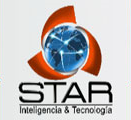Kata Containers Version 2.0 Ships with Rust Agent for Improved Security, Performance With 10x Footprint Reduction
AUSTIN, Texas, Oct. 19, 2020 /PRNewswire-PRWeb/ -- Open Infrastructure Summit --Today, the open source project Kata Containers(TM) issued version 2.0 of the software. Kata Containers provides a way of isolating containerized workloads with security comparable to virtual machines (VMs) without the performance burden of full VMs. This solution offers a fast and secure deployment option for anything from highly regulated workloads to untrusted code, spanning public and private cloud, containers-as-a-service and edge computing use cases.
Kata Containers 2.0 delivers improved performance and observability enhancements as the community continues to address the challenge of providing secure, light, fast and agile container management technology across stacks and platforms:
-- One of the most fundamental changes is a rewrite of the Kata Containers
agent. To help reduce the attack surface and reduce overhead, the agent
was rewritten in Rust. The main benefit users will see is a 10-fold
improvement in size, from 11MB to 300KB. This rewrite and refactoring
also introduces utilizing ttRPC, further improving a user's footprint.
-- Kata Containers 2.0 offers significant improvements around observability
and manageability. Kata Containers now provides metrics about the
runtime itself, the VMM, as well as the guest kernel, all in Prometheus
format. This will help administrators with understanding the
infrastructure impact of running Kata Containers and will help users and
developers better understand workload performance.
-- This release added support for the Cloud Hypervisor VMM, up to the same
level of support as QEMU. The Cloud Hypervisor VMM gives users a choice
of virtualization stack that is designed with only cloud workloads in
mind (i.e. cloud-native and serverless) as opposed to more generic
solutions.
-- Kata-agent-ctl, a tool for agent API debugging, was added to the 2.0
release.
"Kata Containers 2.0 is an exciting release for the community," said Xu Wang, senior staff engineer at Ant Group. "In the 2.0 development cycle, we kept working on weaving Kata into the cloud native infrastructure fabric invisibly by reducing the overhead and improving operability and debuggability. At Ant Group, Kata Containers is running on thousands of nodes and over 10,000 CPU cores, and part of our deployment has been upgraded to a 2.0 pre-release version. We believe the isolation provided by Kata Containers will be the cornerstone of our financial-grade infrastructure architecture."
Kata Containers 2.0 will be available during the Open Infrastructure Summit this week. Check https://katacontainers.io/software/ for download availability.
Upcoming on the software roadmap, the community is developing features to allow users to pull container images inside a sandbox for advanced security and isolation as well as better IO stream handling.
Kata Containers Community Continues to Expand
Over the Kata Containers 2.0 development timeframe, the Kata Containers community added almost 4,000 changes from 167 contributors and 26 organizations including Adobe, Alibaba, ARM, Atlassian, Baidu, CrayGoogle, Microsoft, NVIDIA, and Orange. The Architecture Committee just completed an election last month and includes members from Ant Group, Apple, Intel and Red Hat. Current infrastructure donors include AWS, Google Cloud, Microsoft, PackageCloud, Packet and Vexxhost.
The Kata Containers community has grown since it was announced at KubeCon in December 2017, and open source contributors passionate about container security are invited to get involved. Contributors can expect to work upstream across multiple infrastructure and container orchestration communities, including Kubernetes, containerd / CRI-O, Docker, OCI, CNI, QEMU, rust-vmm, cloud-hypervisor KVM and OpenStack. Get started by connecting with the Kata Containers community.
Meet the Kata Containers Team at Open Infrastructure Summit This Week, October 19-21
Members of the Kata Containers community are presenting on the project and use cases at the Open Infrastructure Summit, being held virtually this week. Sessions include:
-- Changpeng Liu and Xiaodong Liu: Building High Efficient Storage
Infrastructure for Secure Container on Top of SPDK
-- Kailun Qin: Kata * TEE = A Lego-Like Two-way Sandbox for Seamless
Security and Privacy
-- Bin Liu: Observability in Kata Containers 2.0
-- Fupan Li and Wei Yang: The Practice and Landing of Kata Containers in
Ant Group and Alibaba Group
-- Yi Wang: Time-Sensitive Networking (TSN) Enabling on StarlingX
-- Yan Song: Toward Next Generation Container Image
-- Hongliang Tian, Tianjia Zhang and Yutong Jin: Towards
Enclave-as-a-Container with Inclavare Containers and Occlum
-- Jose Carlos Venegas Munoz: Cloud Hypervisor and Kata Containers: A Path
Towards Modernization
About Kata Containers
Kata Containers is an open infrastructure project of the Open Infrastructure Foundation. Delivering the speed and performance of containers with the security of virtual machines, Kata Containers is designed to be architecture agnostic and is compatible with Open Container Initiative (OCI) images as well as the container runtime interface (CRI) for Kubernetes. Kata Containers is hosted on Github under the Apache 2 license. Connect with the Kata Containers community:
-- Freenode IRC: #kata-dev
-- Website: katacontainers.io
-- Developer Mailing List: lists.katacontainers.io
-- Twitter: @KataContainers
About the Open Infrastructure Foundation
The Open Infrastructure Foundation (OIF) builds communities that write open source infrastructure software that runs in production. With the support of over 100,000 individuals in 187 countries, the OIF hosts open source projects and communities of practice, including infrastructure for AI, container native apps, edge computing and datacenter clouds.
SOURCE Kata Containers





